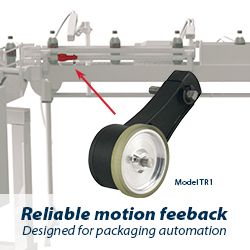Developing the Talent to Lead US Manufacturing Tomorrow Starts Today

The US manufacturing sector has a labor issue: there are too few workers to meet the growing demand for manufacturing jobs across the country.
Reshoring efforts, a wave of Boomer retirements, and advancements requiring new skill sets have coalesced to create labor shortages throughout the manufacturing sector, prompting 65 percent of manufactuers to say that attracting and retaining talent is their primary business challenge.
Over the next decade, US manufacturers are projected to create 3.8 million jobs. However, it's expected that only half of these positions will be filled, as the difficulty in attracting and retaining talent remains the top concern for many in the industry.
To address this issue, we can bolster the country’s small towns and rural communities by deploying a local approach to US manufacturing. This approach simultaneously supports individuals and communities while helping the manufacturing sector attract and retain the talent it needs to thrive.
Here are four best practices for cultivating manufacturing talent from the inside out.
#1 Start Early
Effective workforce development doesn’t start when people apply for jobs. It begins when they are still students.
Put differently, manufacturers can’t wait for talent to find them. They must strategically invest in, contribute to, and maintain talent pipelines by partnering with secondary schools and universities to prepare the next generation of employees with the technical expertise and problem-solving abilities that ultimately make manufacturing agile and successful.
To achieve this, manufacturing companies should:
- Establish an internship program: Internships provide valuable hands-on experience and can help identify potential future employees. With more than 72 percent of interns offered full-time employment, it’s a proven way to develop talent in-house.
- Invest in STEM education: New technological advances, including robotics, artificial intelligence, and advanced manufacturing, are automating many manufacturing jobs. Meanwhile, STEM skills are critical to the next generation of manufacturing roles.
- Create industry-education collaborations: New college graduates are having a hard time finding jobs. This creates an opportunity for manufacturers to partner with academic institutions to prepare students for high-paying and in-demand jobs after they leave school.
To solve their hiring challenges, manufacturers can’t wait for talent to find them. They need to start early, deploying a proactive approach to workforce development.
#2 Create Culture
People accept a job for many reasons. They stay because of the culture.
That’s why attracting and retaining top talent starts with creating an environment where people want to work.
This means creating a culture that:
- Appreciates employees: Small gestures, like providing lunches or donuts on the manufacturing floor, demonstrate care and communicate value for workers’ well-being and morale.
- Operates transparently: Sharing production output and profit share information through video screens or other methodologies helps create an environment of openness and trust.
- Engages everyone: Establish an employee advisory board to ensure that workers have a voice in the decision-making process and promote their active participation in organizational direction.
While these steps will necessarily look different at every company, manufacturers must foster a culture that prioritizes loyalty, trust, adaptability, and transparency so people want to join their company and invest in it for the long haul.
#3 Nurture Careers
People don’t just want a paycheck. They want a job that can become a career.
They also want to be entrepreneurial, innovative, and agile. This is especially true for Gen Z, the youngest generation entering the workforce right now. For example, a Samsung and Morning Consult poll found that 50 percent of Gen Z “aspires to become an entrepreneur or start their own business.”
Manufacturers can cater to these aspirations and entrepreneurial mindsets by treating everyone like an entrepreneur. Task leadership with instilling the qualities that allow people to be entrepreneurs in their processes.
Empower and encourage people to take on challenges and creatively problem-solve for the betterment of themselves and the company. In this way, manufacturers are nurturing innovation and fostering a sense of ownership, which makes their organization a more compelling place to work and more dynamic in its ability to remain agile.
#4 Provide Lifelong Opportunities
Adaptability is inevitable in the manufacturing industry as processes change, consumer demands fluctuate, and new technologies reorient roles and responsibilities.
To support local communities and cultivate a resilient workforce, provide lifelong opportunities empowered by strategic teaching and training. To achieve this, manufacturers will promote (and financially support) continuous learning so their employees are always current with new technologies and industry trends.
Manufacturers can take this a step further by instituting local mentorship or apprenticeship programs that connect experienced professionals with less experienced counterparts.
A Regional Approach to Resilient Manufacturing
Manufacturers have a unique opportunity right now to develop today’s talent, so they are ready to lead the sector tomorrow. It’s also an opportunity to invest in suburban and rural communities, rebuilding US manufacturing from within.
By starting early with strategic partnerships, fostering a positive and transparent workplace culture, nurturing entrepreneurial mindsets, and providing ongoing career development, manufacturers can build a resilient and dynamic workforce.
The sector is strong right now. A regional approach to talent development will help ensure it’s resilient in the months and years ahead.
Doug Backinger, Senior VP, Solutions Engineering & Innovation at Caster Concepts brings a well-rounded background of outstanding leadership and engineering expertise to the team.
Comments (0)
This post does not have any comments. Be the first to leave a comment below.
Featured Product

